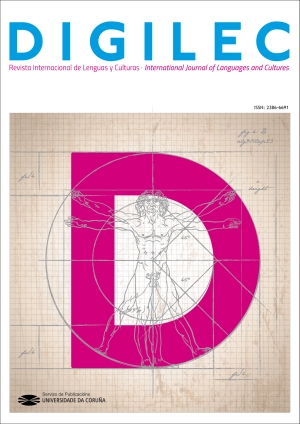Musical intervals in the students’ sound context: a proposal for the development of an educational breakout game
Main Article Content
Abstract
One of the challenges present in the music classroom lies in the understanding and assimilation of musical intervals. This proposal, aimed especially at secondary school pupils, seeks to present a tool designed for the association of musical intervals with elements present in the students’ environment. Therefore, this approach focuses on enhancing their understanding, retention and association significantly, linking these contents to other components present in the students’ surroundings. In order to do this, it is necessary to carry out an auditory training in which this content is developed. The use of these acoustic sources, which are listened to regularly and clearly encoded in their mental processes, optimizes the time spent on their study. In addition, gamification has a positive impact on the willingness of students to face new challenges in their education. Within the windows of opportunity that this methodology offers, the educational breakout games, recently developed, are one of the most appropriate tools for experiential learning. That is why, apart from the explanation of music intervals and their species, students will be required to look for examples of intervals in the music they usually consume as part of a contest. Subsequently, their performance will be reinforced in an auditory, visual and theoretical way through the breakout game.
Keywords:
Downloads
Article Details
References
Ausubel, D. P. (2002). Adquisición y retención del conocimiento. Una perspectiva cognitiva, G. Sánchez Barberán (Trad.). Paidós.
Ballén Molina, R. (2010). La pedagogía en los diálogos de Platón. Diálogos de saberes: investigaciones y ciencias sociales, 33, 35-54. https://dialnet.unirioja.es/servlet/articulo?codigo=3618399
Brufal Arráez, J. D. (2013). Los principales métodos activos de educación musical en primaria: diferentes enfoques, particularidades y directrices básicas para el trabajo en el aula. Revista ArtsEduca, 5, 6-21. https://dialnet.unirioja.es/servlet/articulo?codigo=4339750
Cuevas Romero, S. (2015). La trascendencia de la educación musical de principios del siglo xx en la enseñanza actual. MAGISTER Revista de Formación del Profesorado e Investigación Educativa, 27(1), 37-43. https://doi.org/10.1016/j.magis.2015.05.002
García Lázaro, I. (2019). Breakout como propuesta de gamificación en educación. HEKADEMOS Revista Educativa Digital, 27, 71-79. https://hekademos.com/index.php/hekademos/article/view/17
Hemsy De Gainza, V. (2004). La educación musical en el siglo XX. Revista Musical Chilena, 58(201), 74-81. http://dx.doi.org/10.4067/S0716-27902004020100004
Hemsy De Gainza, V. (2010). Temas y problemáticas de la educación musical en la actualidad. AULA Revista de Pedagogía de la Universidad de Salamanca, 16, 33-48. https://dialnet.unirioja.es/servlet/articulo?codigo=3325931
Kapp, K. M. (2012). The gamification of learning and instruction: game-based methods and strategies for training and education. San Francisco: Pfeiffer.
Mañas Pérez, A. y Roig-Vila, R. (2019). Las Tecnologías de la Información y la Comunicación en el ámbito educativo. Un tándem necesario en el contexto de la sociedad actual. Revista Internacional d’Humanitats, 45, 75-86. http://hdl.handle.net/10045/82089
Mayor Ibáñez, A. y De Pedro Cursá, D. (2009). Nuevos Cuadernos de Teoría. Grado Elemental 2. Real Musical.
Oriola Requena, S. y Gustems Carnicer, J. (2015). Música y adolescencia: usos, funciones y consideraciones educativas. UT Revista de Ciències de l'Educació (2), 28-45. https://doi.org/10.17345/ute.2015.2.660
Porcel Carreño, A. M. (2010). Metodologías musicales del S. XX. Aplicación en el aula. Revista Digital Innovación y Experiencias Educativas, 37, 1-10. https://archivos.csif.es/archivos/andalucia/ensenanza/revistas/csicsif/revista/pdf/Numero_37/ANA_MARIA_PORCEL_2.pdf
Prensky, M. (2001). Digital Natives, Digital Immigrants. On the Horizon (MCB University Press), 9(5), 1-6. https://marcprensky.com/writing/Prensky%20-%20Digital%20Natives,%20Digital%20Immigrants%20-%20Part1.pdf
Renobell Santaren, V. y García Gaiteiro, F. (2016). Gamificación en la educación: Reinventando la rueda. Revista DIM: Didáctica, Innovación y Multimedia, 34, 45-58. http://dimglobal.net/revistaDIM34/docs/DIMAP34gamificacion.pdf
Roca, D. y Molina, E. (2006). Vademecum musical. Definición y ejemplos de términos. Metodología IEM. Madrid: Enclave Creativa.
Salazar Romero, A. D. C., Beltrán Flandoli, A. M. y Loaiza Aguirre, M. I. (2016). Proyecto Ascendere: Un ecosistema de prácticas de Innovación Docente en la UTPL. En In-Red 2016. II Congreso nacional de innovación educativa y docencia en red, V. Botti Navarro y M. A. Fernández Prada (Eds.), 1465-1480. Valencia: Universitat Politècnica de València. https://doi.org/10.4995/INRED2016.2016.4299
Spotify (2021). Canciones más escuchadas: España. Spotify.
https://open.spotify.com/playlist/37i9dQZEVXbJwoKy8qKpHG?si=470bc09415854a9b
Teixes, F. (2014). Gamificación: fundamentos y aplicaciones. UOC.
Vernia Carrasco, A. M. (2012). Método pedagógico musical Dalcroze. ARTSEDUCA Revista electrónica de educación en las artes, 1, 24-27. http://hdl.handle.net/10234/152468
Viñals Blanco, A. y Cuenca Amigo, J. (2016). El rol docente en la era digital. Revista Interuniversitaria de Formación del Profesorado 30(2), 103-114. https://www.redalyc.org/pdf/274/27447325008.pdf
Wiemker, M., Elumir, E., y Clare, A. (2015). Breakout Games: Can you transform an unpleasant situation into a pleasant one?. En Game Based Learning – Dialogorientierung & Spielerisches Lernen Digital und Analog, J. Haag, J. Weißenböck, W. Gruber y C. F. Freisleben-Teutscher (Eds.), 55-68. Viena: St. Pölten University of Applied Sciences. http://skill.fhstp.ac.at/wp-content/uploads/2016/05/Tagungsband_2015.pdf
Willems, E. (2001). El oído musical. La preparación auditiva del niño, M. C. Medina (Trad.). Barcelona: Paidós.


